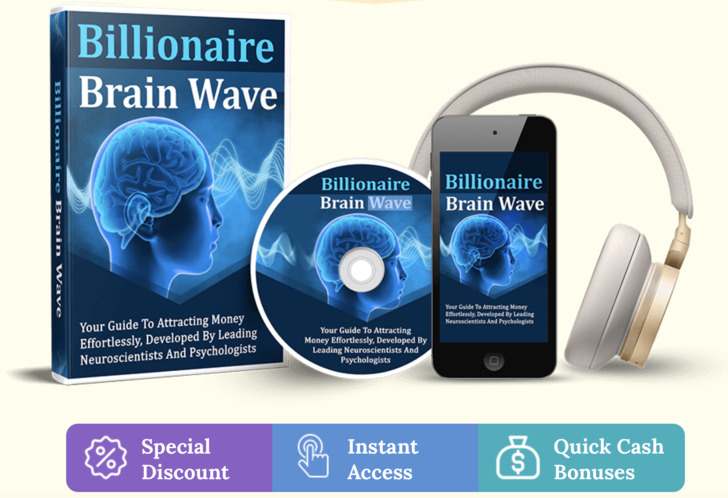If you’re looking for a toolkit designed to help switch up your money mindset, upgrade your inner relationship with wealth, and match up your actions for abundance, the Abundance Amplifier Toolkit by Josh Kay stands out as a practical resource. This digital set includes audio meditations, a printable Money Mindset Journal, and a range of other supports for those interested in mixing mindset work with actionable steps for financial growth. I’m always interested in products that aim to go deeper than surface-level affirmations or generic advice, and this toolkit checks a lot of important boxes for anyone who wants to focus on their internal financial reset as much as their external goals.
Below is my direct review of the Abundance Amplifier Toolkit. I’ll cover what’s inside, how it works, my experience with the materials, the strengths and weaknesses I’ve noticed, and whether I think it’s worth the investment for you. Here’s my rating breakdown for quick reference before we get into the details.

Product Name: Abundance Amplifier Toolkit
Creator: Josh Kay
Website: joshkayofficial.com/abundance-amplifier-toolkit
Price: $47 (one-time), sometimes offered as part of a bundle
Format: Digital workbook (PDF), audio meditations (MP3), printable journal
Main Focus: Money mindset, financial reprogramming, Law of Attraction with practical action
My Overall Rating: 4.7/5
What’s Inside the Abundance Amplifier Toolkit?
The Abundance Amplifier Toolkit gives you several digital resources meant to work together. The main workbook provides background explanations and daily practice instructions built around shifting your subconscious beliefs about money. These aren’t just theories—you’re led through specific exercises, and that’s what I like about it. There’s also a printable Money Mindset Journal, a set of audio meditations for a guided weeklong experience, and a curated list of high-vibration financial affirmations. Everything is put together in a way that focuses on practical action, not just ideas. Here’s what I found inside when I used the toolkit:
- A main PDF workbook explaining the structure, reasoning, and science behind financial mindset shifts
- A printable 30-day Money Mindset Journal, with daily prompts and gratitude lists, which is very useful to keep habits consistent
- "Receiver’s Frequency" seven-day meditations (in audio format), each one around 17-22 minutes, focused on rewiring limiting beliefs and raising financial energy, according to the Law of Attraction approach
- List of 108 financial affirmations organized by topic, which you can use during journaling or on their own
- Three learning modules: 1) Identifying and neutralizing money trauma, 2) Visualization techniques for wealth, and 3) Blending energetic alignment with practical financial planning
There’s no physical product. It’s all instant access, so you don’t have to wait for shipping. I had everything downloaded and ready to start in less than five minutes.
About Josh Kay – The Creator of the Toolkit

Josh Kay is known for his work in personal development and mindset coaching fields, especially those that mix traditions of positive psychology, the Law of Attraction, and behavior change. I have followed some of Josh’s work online for about a year.
He shares a mix of personal stories and practical approaches, which makes the toolkit appealing if you enjoy relatable teachers over abstract theory. He’s someone who openly talks about how he struggled with his own money wounds and scarcity mindset before putting together his own method and sharing it. That hands-on personal experience comes through in the way the materials are explained. I found the instructions clear and direct, with useful explanations for why each step is included.
Josh mentions that a big part of overcoming money blocks comes down to doing “the boring stuff” every day, like small mindset and journaling habits—not one-time sprints or hyped-up motivation. Hearing that reminder from someone who has been through the process themselves feels authentic and encouraging. He also is active in his online community, answering questions or hosting Q&A livestreams for toolkit users. His steady involvement adds more value by making help easily available.
Toolkit Structure and Modules
The toolkit is built into three main learning modules, each section teaching a new part of money mindset work and guiding you through practices that help create real change. Here’s a breakdown of what I found in each module along with some added context to give a larger picture of what you’ll tackle:
1. Identifying and Neutralizing Money Trauma
In this section, you’re asked to look directly at your beliefs about money and where they come from. There are journal exercises aimed at tracking down family or childhood experiences that shaped your default thinking about financial success, failure, or self-worth.
I’m not a fan of overly dramatic language about trauma, but Josh keeps it grounded. He asks you to pick one or two key beliefs, write about where they showed up, and quietly challenge whether those stories are still true today. If you’ve ever had ongoing fear about money, even beyond what your situation justifies, this section is going to make sense.
What really sets this module apart is the emphasis on honesty and gentle self-observation. Instead of shaming old habits, Josh prompts you to look at the origin of your beliefs without judgment. He ties in simple neuroscience explanations about how old financial scripts get "programmed" and then provides prompts that help you spot patterns in your attitudes toward work, spending, or saving. There’s also a short section encouraging you to talk with family or close friends, if you wish, to see where your beliefs might match or differ. This helps you get a sense of your unique mindset triggers, which makes the rest of the toolkit more personal.

2. Visualization and Alignment Techniques
This module introduces advanced visualization practices, but it’s not just about picturing wealth in your life. The audio meditations walk you through very specific scenarios where you see yourself as confident, generous, and calm around money. Combining the meditations with daily written affirmations in the journal boosts the effect over time. I’ve seen positive results by practicing these visualizations twice daily for a week, especially when anxiety around bills or costs flared up.
The method in this section blends mindfulness-based stress reduction and classic visualization. Each meditation is designed to help you "practice" feeling safe to receive money, not just hope it shows up. The journal also invites you to record mental images, emotional reactions, and new ideas sparked by these practices. Over time, this grounds the vision work and makes your intentions more real. Josh even includes a week-by-week tracker that you can use to check your emotional level and overall outlook. If you keep at it, you might be surprised by subtle shifts in your self-talk and memories about money.
3. Building a HighFrequency Financial Plan
This part combines mindset with practical action. You’re encouraged to set inspiring goals, review your habits, and create a simple plan that mixes energetic alignment (like gratitude and positive expectation) with actual financial steps—budgeting, debt payoff, and saving included. The guidance is direct and helps close the gap between "just thinking positive" and real-world results. What’s unique is that you keep returning to how you feel about the plan, not just the numbers, so your plan is more likely to be used instead of feeling like a list of chores.
The module supplies templates for goal-setting and simple habit trackers. There’s a bonus prompt to write out your "ideal money day," which lets you dig into your preferences and set rewards for meeting milestones. Even though the toolkit isn’t packed with complex budgeting tools, the real value is in helping you bring awareness and emotional balance to your plans. With regular use, the process encourages you to celebrate small wins and keep momentum on your financial adventures.
Audio Meditations and Financial Affirmations
One of the toolkit’s key features is the set of seven guided audios called the Receiver’s Frequency meditations. Each one aims to do a mental reset on your financial self-image. They aren’t full of hype or over-the-top promises. You get steady, calming instructions and visualization cues that focus on stepping into a more open, receptive emotional state. I noticed that when I used the meditations at the start and end of my day, I became more aware of old money worries coming up, and the guidance made it easier to let go and redirect my thinking.
The 108 financial affirmations are sorted into categories such as Safety with Money, Welcoming Wealth, and ActionBased Growth. Rotating through them during the journaling exercises helped me notice which ones triggered an immediate emotional response, good or bad. That’s helpful feedback. If an affirmation feels completely wrong, it usually highlights an old limiting belief that you can then challenge or talk through further in the journal prompts. I keep several affirmations handy near my workspace to review midafternoon (when doubts usually hit hardest for me).
These tools are especially useful for building positive habits around checking in with your emotions before and after money-related decisions. Over time, awareness plus affirmation tends to make the shift from scarcity thinking to possibility thinking much easier. If you’ve found it hard to stick with affirmations in the past, the structured approach here may help you keep with it long enough to see real benefits.
Printable Money Mindset Journal

The Money Mindset Journal is a 30-day planner and gratitude log. For me, it’s the most useful piece of the toolkit if you want to make gradual, lasting changes. Each day gives you a simple gratitude prompt and a small space to rate your money emotions. The layout is designed so you can complete it quickly, which made it much more likely that I’d stick with it first thing in the morning, even on busy days.
I noticed after about ten days that my language around money was changing. Conversations with family or friends became less negative, and I caught myself describing spending or saving in more hopeful terms. These small changes sound minor, but over time, they add up to a stronger baseline attitude and less stress around money decisions. The tracking pages at the end let you look back and see progress over the weeks, which builds confidence and motivation to keep going. Even after the first month, I found value in reusing the journal prompts for a second round, making each new entry a chance to learn more about my growth.
Strengths and Weaknesses of the Abundance Amplifier Toolkit
After spending three weeks working with the toolkit, here’s what stood out as the main strengths and a few areas I think could be improved. I’ve included more detail on each point to help you decide if it’s the right fit for your needs:
Strengths
- Everything is action-oriented and organized. You won’t get fluff or unnecessary sidetracks, meaning you can see results if you read and apply the steps consistently. The focused layout makes it easy to follow.
- The mix of mindset (affirmations, visualizations) and real-world action (planning, tracking) creates ongoing accountability and helps make the most of your new habits.
- Audio guides and printables make it multi-sensory, so it fits different learning styles, whether you learn better by listening, writing, or reading.
- The explanations for how subconscious beliefs affect money are simple and easy to follow even if you’re totally new to mindset work. This lowers the barrier for anyone unsure where to begin.
- Josh Kay’s approachable style and personal experience keep it relatable without being preachy. His real-world stories help you see yourself in the process and build trust that the system is doable for regular people.
- The digital format means instant access, allowing you to start at your own pace without additional costs or hassle. Many people prefer digital for convenience and the ability to reprint materials when needed.
Weaknesses
- Those who want a super detailed budgeting spreadsheet or advanced financial management tools will find this too light. It’s geared toward emotional reset and habits, not hardcore accounting or investing.
- Some of the Law of Attraction concepts may feel a little "woo" for those who prefer strictly material logic. However, the blend of grounding tasks balances this for most people, especially if you keep an open mind to both science and intuition.
- Because it’s a digital-only product, you’ll need to print materials for the journaling (unless you use a tablet or editable PDF), which can be inconvenient for those who prefer regular workbooks or don't have easy access to a printer.
- The toolkit is self-paced, so if you need external deadlines or tight structure, you’ll have to set them yourself to stay on track. Some folks thrive with outside accountability, which isn’t built in here.

Who Is the Abundance Amplifier Toolkit For?
I see this toolkit as useful for anyone who fits one or more of these situations:
- Feels stuck in repetitive earning and spending cycles or wants to clear out old scarcity beliefs that hold them back from progress
- Has read a lot about personal finance but struggles to stick with new habits or keep a positive attitude during setbacks
- Enjoys personal development and is open to a blend of mindset and structured action, rather than just pure financial strategy
- Prefers a self-paced, low-pressure approach rather than group courses or high-intensity financial coaching sessions
- Wants a starter pack to build a foundation before jumping into more advanced courses or planning systems
If you’re looking for immediate, dramatic results with no effort, this isn’t for you. Real change tends to show up after two or three weeks of regular practice. I recommend doing at least one daily journal entry and one affirmation or meditation session per day for the best results. I found I got more value by combining the audios with written work for the first two weeks, then continuing the journaling for maintenance and deeper reflection.
Toolkit Pricing and Access
The Toolkit is priced at $47 for lifetime access, and this includes any updates or future added materials. Sometimes Josh Kay offers the toolkit as part of a larger bundle or as a bonus for his digital courses for those interested in more advanced programs, but the standalone version works well as a complete starter pack. There’s no recurring subscription, which is a plus for those wary of ongoing costs. Refunds are available within 30 days, so you can try it out and see if the framework matches your needs. I bought the toolkit directly through the official website and received access through an email link immediately.
Josh regularly updates his products based on community input and user feedback, so if you stick around, you may see additional bonuses sent out. This long-term support adds to the value and removes the fear of buying something that becomes dated fast.
My Experience and Final Thoughts
Working with the Abundance Amplifier Toolkit has helped me spot old thinking patterns around money that I didn’t realize were still running in the background. Daily journaling and affirmation work may seem simple, but having prompts and structure makes following through much easier. The biggest changes I noticed involved a drop in anxiety about bills, a stronger focus on gratitude for smaller financial wins, and clearer thinking when new opportunities or challenges popped up. While the toolkit doesn’t contain extremely advanced financial strategies, it does an excellent job of targeting the beliefs and routines that usually block progress in the first place.
If you’ve tried books or videos on money mindset in the past and found them too vague or purely theoretical, I think you’ll find this practical and actionable. It helped me build consistency over time and set a foundation for further financial growth work. There’s no promise of overnight riches, but for those willing to put in steady, daily effort, the tools here can lead to a real difference in your sense of ownership and self-worth around money. One suggestion: Invite a friend or family member to try the journaling with you for added accountability and mutual support.
If you have questions about the toolkit or want support as you try it, I’m always happy to share what’s worked for me and where I’ve stumbled. Feel free to reach out if you want more details or want to compare notes. Sometimes talking things out with like-minded folks makes the learning curve easier and adds motivation to keep going. Bottom line, if you want to mix practical steps with a renewed inner attitude, the Abundance Amplifier Toolkit is a useful, value-packed choice for stepping into a better financial experience.
How I "Finally" Make Over $7,000 Monthly Income
"The most valuable thing I've ever done!"

